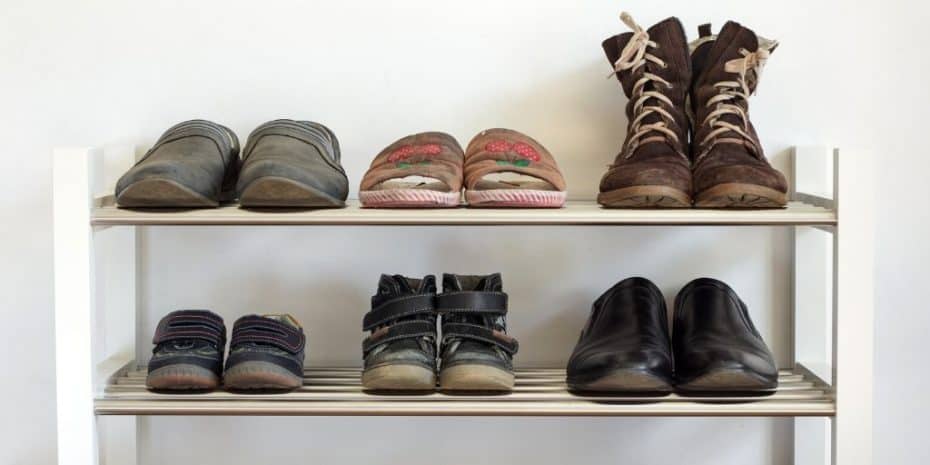
Bad tenants are devastating to your property’s ROI.
When we teach property management, one of the core concepts we cover is the “Four Horsemen of Rental ROI.”
The idea is simple:
Your ROI is determined not by what happens in a typical month or if the rent comes in on time, but by how often you experience irregular-but-expensive events as a landlord:
- Rent defaults & evictions
- Turnovers
- Repairs
- Lawsuits or other legal entanglements
What do all of these instances have in common? Horrible tenants skyrocket your risk of seeing one or more of these “Four Horsemen.”
I’ve had tenants cost me over $25,000 due to unpaid rents, the damage left behind in the property, and eviction and legal fees. (As a matter of fact, I’m still in the red for one particular property to this day — not a great feeling)
Fortunately, you can spot most bad tenants if you screen them carefully enough. Far too many landlords can’t be bothered to aggressively screen their tenants and then wonder why their returns from said renters end up being mediocre.
Here’s what you should do with every single rental applicant that shows interest in your vacant rental units so you ensure you only approve of legitimate, low-risk lessees and avoid the “Four Horseman” crowd altogether.
1. Pre-Screen Before Showing the Property
Showing vacant properties is time-consuming. Save yourself the hassle with a five-minute phone call or email interview with prospective renters before scheduling an appointment to show the property.
Ask a few basics, like how many people over 18 will be moving in and the status of each adult’s after-tax income.
One trick is to phrase your questions in a way that doesn’t allow yes or no answers. For example, don’t ask, “Do you have the security deposit and first month’s rent available now?” – which most people will say “yes” to even if they don’t really. Instead, ask, “When will you have the security deposit and first month’s rent available to put down?”
Similarly, ask “How many pets do you have?” rather than “Do you have any pets?” You’re far more likely to get an honest answer this way.
RELATED: 6 Ways to Prevent Losses from Pets as a Landlord
Be sure to say, “We run full credit reports, nationwide criminal background checks, and eviction history reports on all applicants. What will we find when we run yours?”
It’s also critically important you explain any application or tenant screening fees that will be charged to them.
If any of the prospect’s answers don’t sit well with you, end the application process early so you don't waste your time with a property showing.
2. Try the Shoe Rack Trick
Unlike the other screening tasks on this list, this one isn’t strictly necessary, but nonetheless, I find it interesting.
Here's the idea: Spend $40 on a shoe rack that matches the living room/entryway colors and put it by the front door. When you walk in to show the property to a prospect, take your shoes off and put them on the rack.
Watch the applicant closely for their reaction. Do they balk? Or, do they take it as a matter of course, to take off their own shoes?
Clean, respectful renters won’t balk, even if they aren’t in the habit themselves (yet).
Besides giving you a quick insight into their attitudes, this serves two primary purposes.
- First, it sends a loud (if implied) message: Your rental unit deserves respect. It is upscale enough that the proper decorum is to remove shoes upon entry.
- Second, you set a precedent, encouraging renters to remove shoes whenever entering the unit in the future. You can even add a clause in your lease agreement, requiring renters and guests to remove shoes upon entry. It’s hard to enforce, but they may well comply with it on their own.
And if they do comply, it will save your flooring considerable wear and tear.
3. Peek In Their Car
When you’ve finished showing them the vacant unit, walk them to their car if possible. Get a good look inside their vehicle.
How clean is it? Are there old burger wrappers on the floor? Old coffee cups in the cup holders? Stains on the seat and carpets? Or is it neat and clean?
People tend to treat their car the same way they treat their home. Dirty, messy people typically have dirty, messy homes, and dirty, messy cars.
Do you want someone like that living in your investment property, that you spent tens or hundreds of thousands of dollars on?
4. Conduct Rental Application & Tenant Screening Reports
Notice that these – which most landlords think of as the entire tenant screening process – is only one of seven items on this list?
Still, they’re a crucial step. Have each prospective adult over 18 complete a thorough rental application, which includes a release for you to contact employers, landlords, and anyone else deemed appropriate to screen them as an applicant.
The application should list all occupants of the property, their ages, occupations, income. Cars, pets, assets, the works. Also, be sure to ask if they’ve ever sued someone before — that’s a big red flag — and for both their current and former landlord’s name and number (more on that momentarily).
And then, of course, come the screening reports. There are three that you should run, at the very least: a full credit report, a nationwide criminal background check, and a nationwide eviction history report.
In some ways, the eviction report is the most important of these. If someone has ever been evicted, it shows they’ve been a bad tenant in the past, which means there’s a strong chance they’ll be a bad tenant for you.
RELATED: The Quick and Easy Guide to Tenant and Borrower Screening
Much has been written about this part of the screening process, so we won’t belabor the point. But carefully review the rental application and all three reports for red flags.
5. Call Employers & Speak to Two People
When you call an employer, be sure to speak to two people: the applicant’s direct supervisor, and an HR department rep.
The latter is simple – all you need to know is how long the applicant has worked there and their exact income. Be sure to specify that you’re confirming their net income, after taxes. If this income doesn’t match their stated net income on their rental application, it’s a big ol' red flag.
Your conversation with the direct supervisor will be more nuanced. You want to get a feel for what kind of employee the applicant is and what kind of person they are. Do they show up for work on time every single day, or are they sometimes (or often) late? Do they ever show up reeking of Boone’s Farm?
Also, ask how reliable they are with their day-to-day work and if they're respectful of their company's rules and regulations.
Wrap up by inquiring about how likely they are to still be employed a year from now (and even three or five years, if you want a clearer notion of how they're perceived by their bosses).
Read between the lines by gauging the supervisor’s demeanor. Decisive answers are a good sign. Beware when you hear hesitations that start with “Um” and “Well” and qualified statements like, “He’s mostly an okay worker,” or, “She’s usually okay about getting in on time.”
6. Call Current and Former Landlords
Let's circle back to contacting existing and previous landlords.
First, call the current landlord and ask similar questions that you asked the applicant’s direct supervisor, like verifying how long they’ve lived at the property (longer = better).
Also, discover what kind of tenant they are by asking questions like:
- What day of the month do you usually receive the rent?
- How clean are they?
- Do they call you every other week complaining that a light bulb went out, or do they only call when there’s a serious problem?
- Have you ever served a late notice on them, or another lease violation notice?
- Have you ever filed in court for eviction?
Similarly, read between the lines in how they answer. Keep in mind that if the tenant is terrible, the current landlord will want them out and may tweak the truth to make that happen.
That’s why it’s so important to call their former landlord as well. They have no agenda – they’ll tell it to you straight.
7. Last Step: Inspect Their Current Home
You got a good look at their car. Now you want to take it a step further and look at their current home.
Make no mistake: How they treat their current home is exactly how they’ll treat your property. It’s a crystal ball to glimpse the future of what leasing to this tenant will be like, at least as far as physical treatment of your property.
Messy is a not-so-promising sign. Dirty is worse. Pay close attention to kitchens and bathrooms in particular.
How do the walls look? Scuffed and scraped and stained? The unit was probably repainted before the tenants moved in, and if it wasn’t, then the walls must have been in decent, showable shape.
Nor does it end with the interior. Have they kept up with lawn care? Gardening? Landscaping? Or is it an overgrown jungle?
Ideally, you don’t want to give the applicants a lot of notice to clean up the property. You want a snapshot of how it looks on a typical day. One option is to call and say, “Hey, I’ll be in the neighborhood later. Can I come by your place and bring a copy of the lease agreement?” While you’re there, ask to use the bathroom, so you can get a glimpse beyond the living room.
Your Ultimate Goal
Most landlords think about vacancies and tenant screening all wrong. They think their goal is to fill the vacancy ASAP with a decent tenant.
In short, that’s a recipe for mediocre returns.
Instead, think of your goal as securing high-ROI, low-maintenance tenants that will be with you for the long haul. You solely want respectful, reliable, clean renters — people who will pay the rent on time, comply with your other rules, and treat your property with dignity and respect.
It’s better to have a month or two of vacancy, while you secure a high-ROI, low-maintenance tenant than to bring in someone who will make your life miserable.
You didn’t become a landlord so you could chase down deadbeats in rent court. You became a landlord for the passive income. And nothing you do is more important to your returns and passive income than securing the best possible tenants in your rental units.












